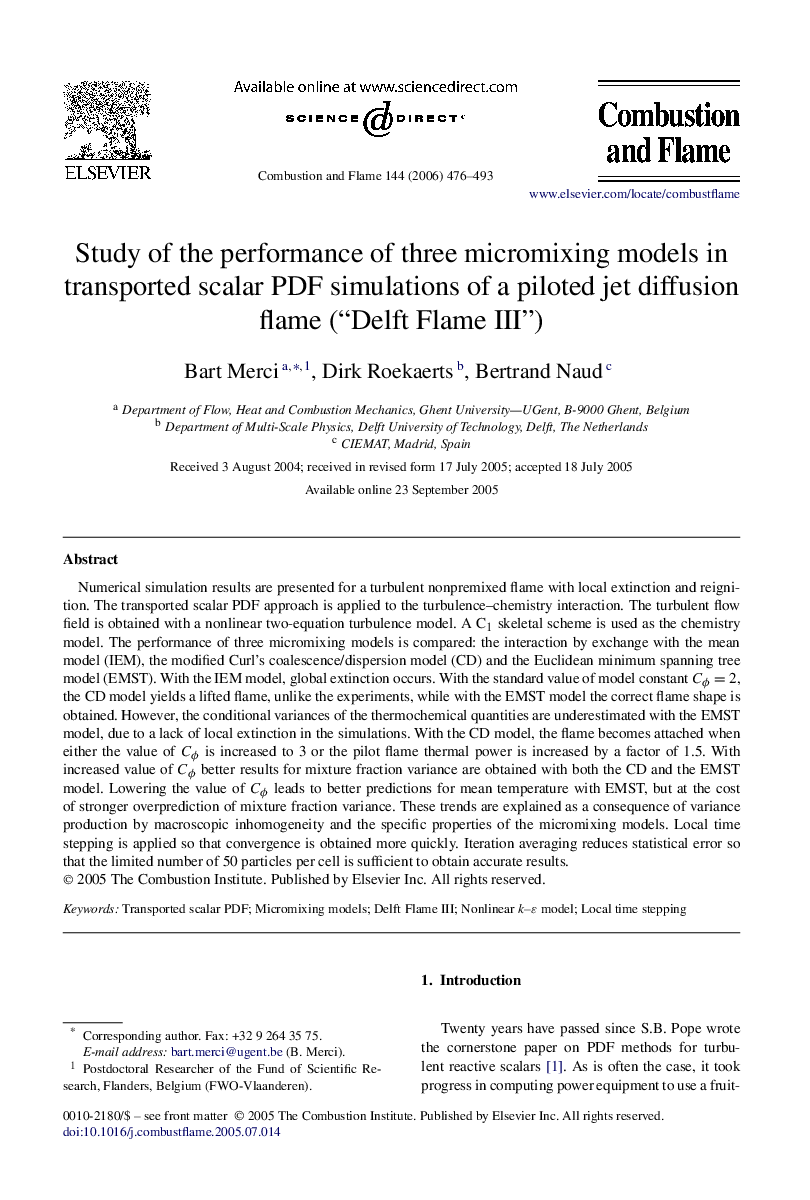| کد مقاله | کد نشریه | سال انتشار | مقاله انگلیسی | نسخه تمام متن |
|---|---|---|---|---|
| 167509 | 457866 | 2006 | 18 صفحه PDF | دانلود رایگان |

Numerical simulation results are presented for a turbulent nonpremixed flame with local extinction and reignition. The transported scalar PDF approach is applied to the turbulence–chemistry interaction. The turbulent flow field is obtained with a nonlinear two-equation turbulence model. A C1 skeletal scheme is used as the chemistry model. The performance of three micromixing models is compared: the interaction by exchange with the mean model (IEM), the modified Curl's coalescence/dispersion model (CD) and the Euclidean minimum spanning tree model (EMST). With the IEM model, global extinction occurs. With the standard value of model constant Cϕ=2Cϕ=2, the CD model yields a lifted flame, unlike the experiments, while with the EMST model the correct flame shape is obtained. However, the conditional variances of the thermochemical quantities are underestimated with the EMST model, due to a lack of local extinction in the simulations. With the CD model, the flame becomes attached when either the value of CϕCϕ is increased to 3 or the pilot flame thermal power is increased by a factor of 1.5. With increased value of CϕCϕ better results for mixture fraction variance are obtained with both the CD and the EMST model. Lowering the value of CϕCϕ leads to better predictions for mean temperature with EMST, but at the cost of stronger overprediction of mixture fraction variance. These trends are explained as a consequence of variance production by macroscopic inhomogeneity and the specific properties of the micromixing models. Local time stepping is applied so that convergence is obtained more quickly. Iteration averaging reduces statistical error so that the limited number of 50 particles per cell is sufficient to obtain accurate results.
Journal: Combustion and Flame - Volume 144, Issue 3, February 2006, Pages 476–493